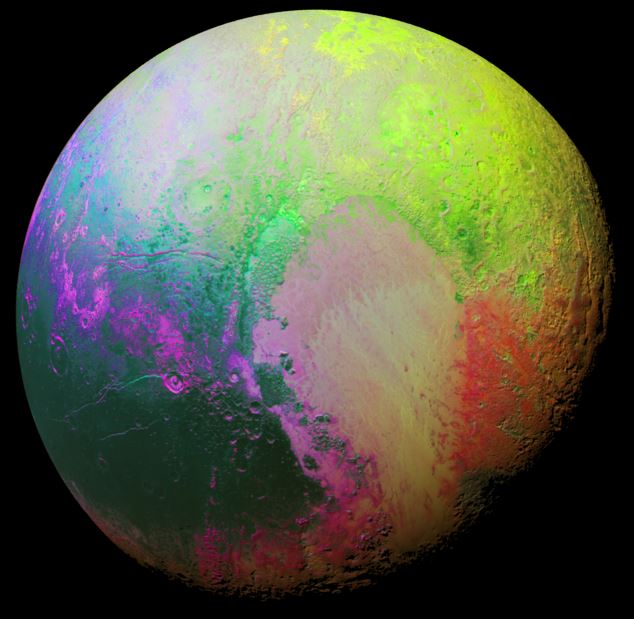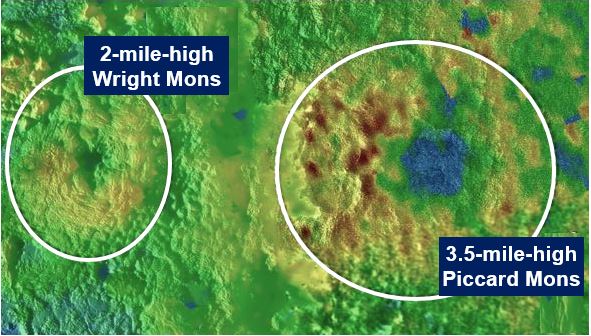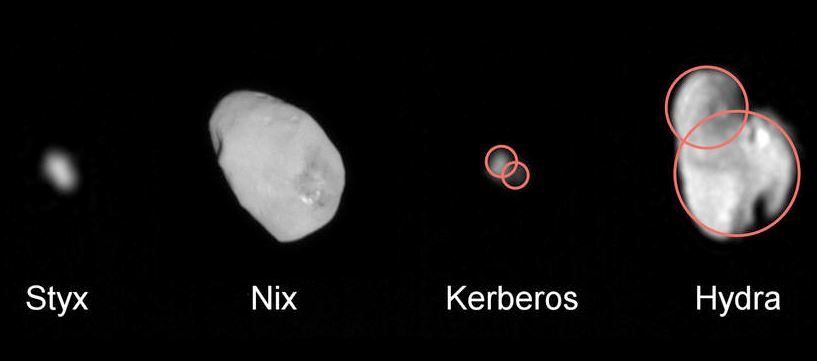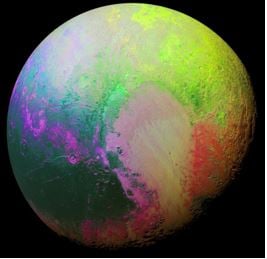A huge area on the surface of Pluto is completely crater free, an image of the dwarf planet produced by NASA’s New Horizons scientists called ‘Psychedelic Pluto’ shows. The area, a large western lobe on the surface known as Sputnik Planum, has a surface that is less than 10 million years old. For any geologic activity, which would have smoothed the surface over, to occur so recently on such a small object as Pluto is astonishing, scientists say.
10 million years is a blink of an eye compared to our Solar System’s lifetime of about 4.5 billion years, the NASA researchers explained.
‘Psychedelic Pluto’ is a false color image that used a technique called principal component analysis to highlight several of the subtle color differences between the dwarf planet’s distinct regions.
 ‘Psychedelic Pluto’, showing the dwarf planets surfaces in different colors. (Image: www.nasa.gov)
‘Psychedelic Pluto’, showing the dwarf planets surfaces in different colors. (Image: www.nasa.gov)
Image taken during spacecraft’s flyby
The image data were collected by New Horizon’s Ralph/MVIC color camera on 14th July at 11:11 AM UTC, when it was 22,000 miles (35,000) from Pluto’s surface.
The image was presented by Will Grundy, a member of New Horizon’s surface composition team on 9th November at the Division for Planetary Sciences (DPS) meeting of the American Astronomical Society (AAS) in National Harbor, Maryland.
The crater-free region suggests that recent geologic processes smoothed over the surface. NASA scientists were amazed when they saw it, because for such a process to occur an internal heat source is required, which is usually lost in small celestial bodies like Pluto, especially billions of years after their creation.
Alan Stern, of the Southwest Research Institute (SWRI) in Colorado, said at the AAS meeting:
“It’s a huge finding that small planets can be active on a massive scale, billions of years after their creation.”
New Horizon researchers announced a number of findings at the AAS meeting. Apart of estimating the age of some of Pluto’s regions, they presented new data about the dwarf planets small and hazy atmosphere, as well as the discovery of what are likely to be ice volcanoes on the surface.
Pluto’s ice volcanoes
Among the fifty exciting discoveries about the dwarf planet, are its likely ice volcanoes and moons that not only orbit the planet but spin rapidly.
New Horizons is a space probe launched as part of NASA’s New Frontiers program on 19th January, 2006. On 14th July, 2015, it flew super close (7,800 miles – 12,500 km) to Pluto’s surface.
 Image of the two mountains on Pluto’s surface, informally named Wright Mons and Piccard Mons, which are probably ice volcanoes. (Image: NASA/JHUAPL/SwRI)
Image of the two mountains on Pluto’s surface, informally named Wright Mons and Piccard Mons, which are probably ice volcanoes. (Image: NASA/JHUAPL/SwRI)
Director of planetary science at NASA Headquarters in Washington, Jim Green, said:
“The New Horizons mission has taken what we thought we knew about Pluto and turned it upside down. It’s why we explore – to satisfy our innate curiosity and answer deeper questions about how we got here and what lies beyond the next horizon.”
Geologists working with the New Horizons mission combined images of Pluto’s surface to create 3-D maps that suggest its most distinctive mountains are likely to be cryovolcanoes – ice volcanoes that were probably active in the recent geological past.
Dwarf planet has spinning, merged moons
The New Horizons team says it has also learned a great deal about Pluto’s system of moons, and their amazing properties.
While most other moons in the Solar System, including our Moon, have one side facing toward the planet all the time – Pluto’s don’t. They rotate rapidly.
 At least two (and perhaps four) of Pluto’s smaller moons merged with other moons in the past. (Image: NASA/JHUAPL/SwRI)
At least two (and perhaps four) of Pluto’s smaller moons merged with other moons in the past. (Image: NASA/JHUAPL/SwRI)
Its most distant moon, Hydra, rotates 89 times for each full orbit. The team believes the moons’ spin rates are not constant, because its largest moon (Charon) exerts a powerful torque that prevents the smaller moons from settling down into synchronous rotation.
Mark Showalter, from the SETI Institute in Mountain View, California, said “Pluto’s moons behave like spinning tops.”
After examining the new images, the scientists think that some of the smallest moons may have merged with other moons in the past.
Showalter said:
“We suspect from this that Pluto had more moons in the past, in the aftermath of the big impact that also created Charon.”
Video – Pluto’s Psychedelic Makeover

